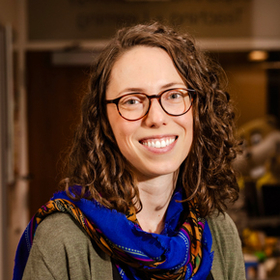

3-154 Molecular and Cellular Biology
515 Delaware Street SE
Minneapolis, MN 55455
United States
Sarah
Hammarlund
My research centers around students' sense of belonging in STEM courses, anti-racist teaching of genetics, and improving instruction of sex and gender within biology. Along with collaborators, I've written a new edition of the textbook for BIOL 1003: The Evolution and Biology of Sex.
Research statement
My biology education research centers around both students' sense of belonging in STEM courses and how students incorporate mathematical ideas into their biology learning. My background is in ecology, evolution, and behavior, where I've explored mutualistic interactions between different species of bacteria. I find mutual reliance -- both in education and in biology -- to be endlessly fascinating.
Selected publications
Hammarlund, S. P., Scott, C., Binning, K. R., & Cotner, S. (2022). Context Matters: How an Ecological-Belonging Intervention Can Reduce Inequities in STEM. BioScience, 72(4), 387-396.
Creech, C., Just, J., Hammarlund, S., Rolle, C. E., Gonsar, N. Y., Olson, A., ... & Cotner, S. (2022). Evaluating the Representation of Community Colleges in Biology Education Research Publications following a Call to Action. CBE—Life Sciences Education, 21(4), ar67.
Chacón, J. M., Hammarlund, S. P., Martinson, J. N., Smith Jr, L. B., & Harcombe, W. R. (2021). The ecology and evolution of model microbial mutualisms. Annual Review of Ecology, Evolution, and Systematics, 52, 363-384.
Hammarlund, S. P., Gedeon, T., Carlson, R. P., & Harcombe, W. R. (2021). Limitation by a shared mutualist promotes coexistence of multiple competing partners. Nature communications, 12(1), 619.
Hammarlund, S. P., & Harcombe, W. R. (2019). Refining the stress gradient hypothesis in a microbial community. Proceedings of the National Academy of Sciences, 116(32), 15760-15762.
Hammarlund, S. P., Chacón, J. M., & Harcombe, W. R. (2019). A shared limiting resource leads to competitive exclusion in a cross‐feeding system. Environmental microbiology, 21(2), 759-771.